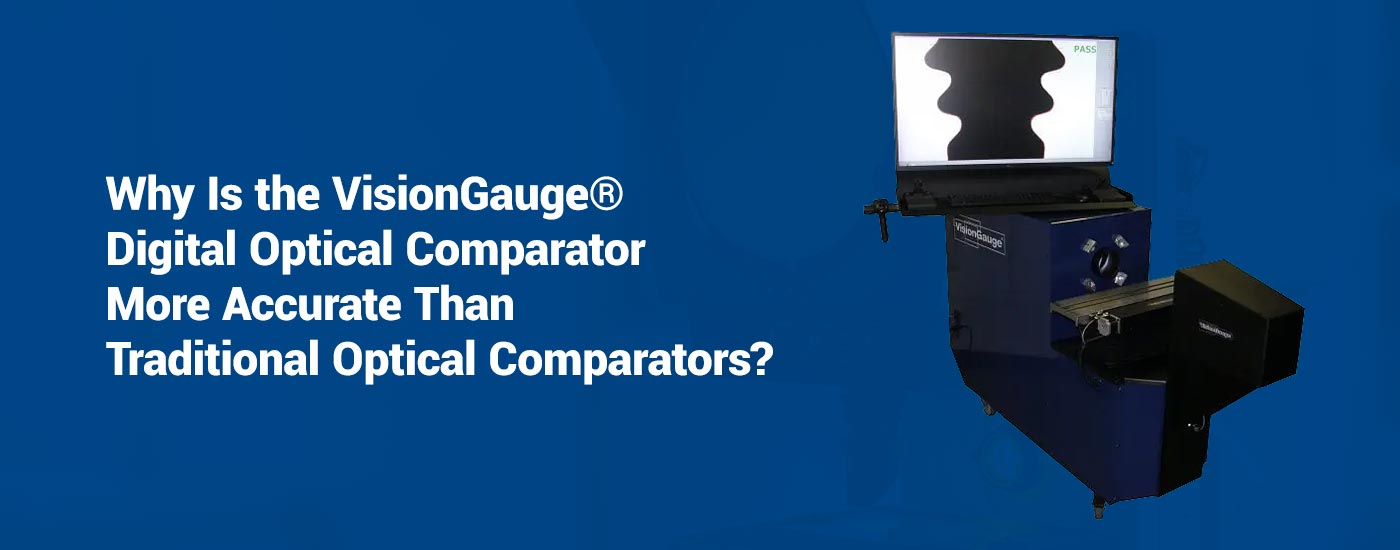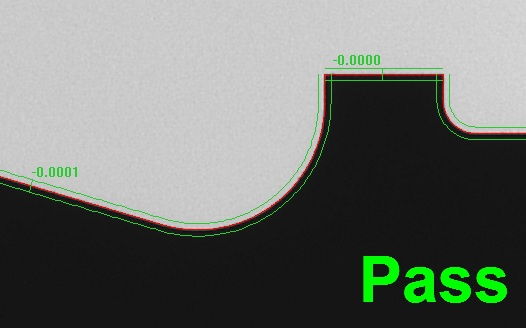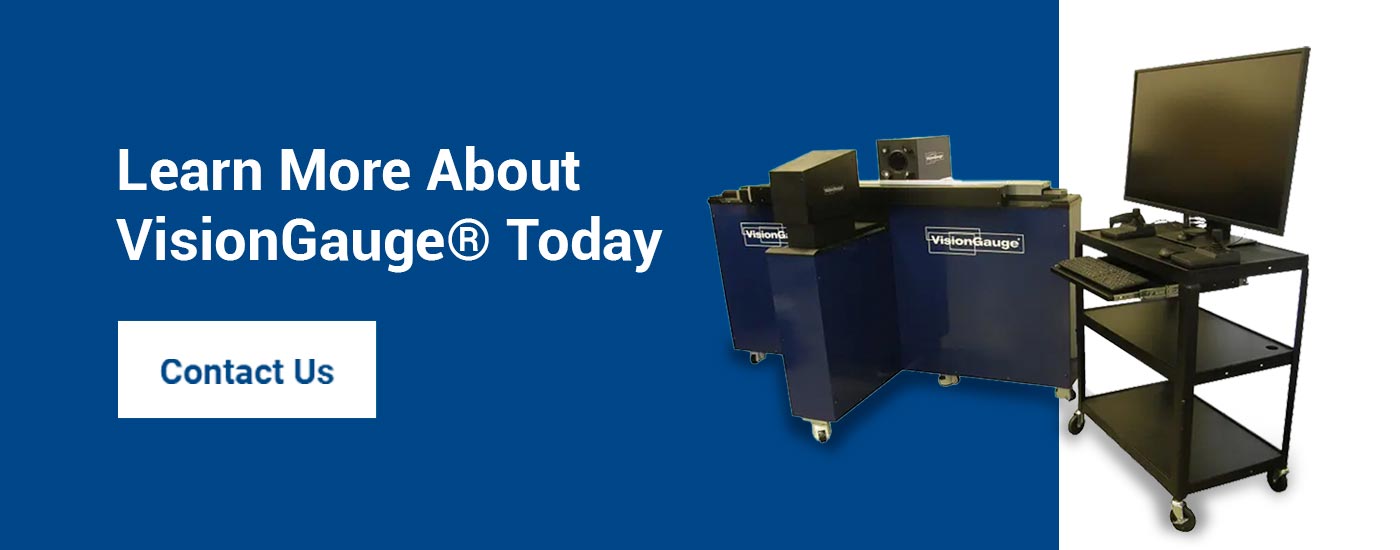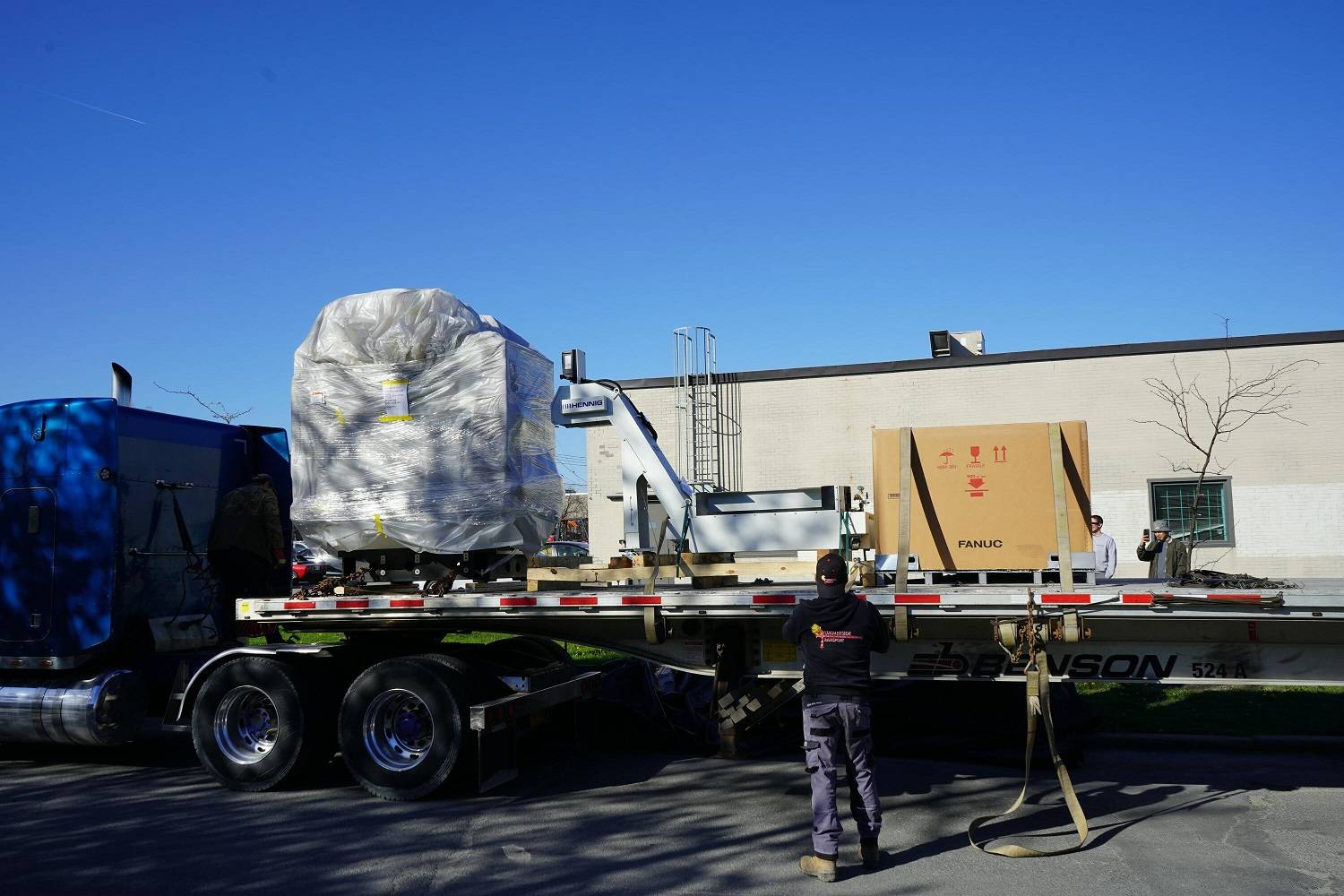
Both the manufacturer and users have performed real-word tests with the VisionGauge® Digital Optical Comparator, showing that it’s significantly more accurate and repeatable than traditional optical comparators. With VisionGauge®, measurement accuracy, repeatability, reproducibility, and Gage R&R results are much better. Below, we will look into the main reasons why the VisionGauge® Digital Optical Comparator offers complete measurement equipment accuracy.
1. Completely Different Optical System
Traditional optical comparators magnify a small portion of the part being inspected onto a large projection screen. Let’s consider, for example, a 10X, 30″ comparator. A 10X magnification means this comparator will project a 3″ portion of the part onto its 30″ projection screen.
A traditional optical comparator does this using an optical system that is comprised of prisms, lenses, and mirrors. These are difficult to manufacture, and all have a certain level of defects. The large lenses used in the lower magnification traditional optical comparators — such as 5X — are especially difficult to manufacture and are the ones that suffer from the most inaccuracies and non-uniformities.
The VisionGauge® Digital Optical Comparator works differently. If we stay with this 10X example, VisionGauge® takes this same 3″ field-of-view, but instead of “blowing it up” to 30″, it reduces it to a roughly 1″ camera sensor. Lenses that do this are much easier to manufacture and are more defect-free. This means that right out of the gate, VisionGauge® starts off with a much better, more geometrically accurate image.
Superior Contrast and Image Quality
This fundamental difference in the optical systems of traditional optical comparators and of the VisionGauge® Digital Optical Comparator brings about another important added benefit. It’s well known that traditional optical comparators have very low contrast, which makes it even more difficult for operators to determine — subjectively — if a part is within tolerance.
Historically, attempts to address this contrast issue have involved putting a screen or curtains around the operator’s station to try to “dim” ambient illumination and allow the operator’s eyes to adjust. This low contrast issue with traditional optical comparators is related to the fact that they take the light from the smaller area being inspected and disperse it over a much larger projection screen — in our example above, light from a 3″ area is dispersed over a 30″ area.
Since it uses a completely different approach with a completely different optical system, the VisionGauge® Digital Optical Comparator doesn’t have to deal with any of these contrast issues. Because it collects the light from a larger area onto a much smaller camera sensor, VisionGauge® isn’t light-starved like traditional optical comparators can be. With VisionGauge®, there are no contrast issues to overcome and the overall image quality is superior.
Larger Depth of Field
It’s interesting to note that VisionGauge®’s re-thought optical system also provides another benefit — a much larger depth-of-field. This means that in most cases, everything is in focus “at once,” and the operator doesn’t need to continually refocus as they do with traditional optical comparators that have a very thin depth-of-field. This doesn’t contribute to an increased accuracy per se, but it certainly is a benefit from the user’s practical perspective.
2. Mathematical Digital Image Correction
So far, we’ve seen why the image that reaches VisionGauge®’s camera sensor is much better and more geometrically accurate than the one that reaches a traditional optical comparator’s projection screen. But understanding how accurate a standard optical comparator is compared to a VisionGauge® Digital Optical Comparator doesn’t stop there.
At this point, VisionGauge® is working with a digital image. There’s much that can be done when the image is in digital form, especially in the case of a high-contrast, super-high-resolution digital image, such as the one produced by VisionGauge®. VisionGauge® takes this better, more geometrically accurate image and improves it further.
Specifically, VisionGauge® uses a proprietary calculation scheme to carry out real-time full 2D non-linear distortion correction – directly on the live image video stream. These corrections eliminate the last remaining small geometric inaccuracies in the image, which even further increases the system’s final precision and accuracy.
3. Digital Image Processing
VisionGauge® can carry out digital processing of the image, which is another advantage over traditional optical comparators. For example, VisionGauge® can apply edge sharpening, electronic noise reduction, or any of the digital image processing and enhancement techniques that are now so widespread via the various cameras prevalent in everyday life.
4. Works Directly With the Part’s CAD Data (No Overlays!)
Traditional optical comparators use templates, Mylars™, overlays, or transparencies to compare a part to its drawing. These are printed out on transparent material that is then laid on the comparator’s screen. Of course, no printer is perfect, and printing errors reduce accuracy. Over time, this overlay material can stretch and distort slightly, which leads to a further reduction in accuracy.
The VisionGauge® Digital Optical Comparator compares a part to its CAD data directly. The CAD data is the mathematical description of the part. The data to which VisionGauge® compares the part is completely error-free — with VisionGauge®, there are absolutely no inaccuracies introduced at this stage of the process.
5. Powerful Sub-Pixel Accurate Edge Detection
With traditional optical comparators, pass/fail determinations are subjective and operator-dependent: Multiple operators may need to consult each other for an opinion on if a part is good or bad. In comparison, the VisionGauge® Digital Optical Comparator uses sub-pixel accurate edge detection, making it ideal for high-precision manufacturing techniques. This completely eliminates operator subjectivity. Because its edge detection tool is sub-pixel accurate, VisionGauge® can actually locate edges accurately between pixels. This further increases digital optical comparator accuracy and precision.
6. Patented CAD Auto-Align™
With traditional optical comparators, the alignment of the overlay to the part and its datums are subjective. That can be a huge source of errors, and — obviously — results are operator-dependent.
The VisionGauge® Digital Optical Comparator has a powerful patented CAD Auto-Align™ tool that automatically aligns the CAD to the part along one or multiple datums or as an overall best fit. Results are extremely repeatable and completely operator-independent. This is a huge advantage over traditional optical comparators!
Furthermore, VisionGauge®’s CAD Auto-Align™ tool is not limited to the system’s field of view, or what the system “sees” at a given moment in time. It can actually travel down the length of long parts, capture images at different locations, and carry out a CAD Auto-Align™ over the entire length of the part. The automatic CAD-to-part alignment is not limited to small parts and can be carried out over large parts, to very high accuracy. That’s just about impossible to do on a traditional optical comparator, even in a subjective and operator-dependent fashion.
7. Patented CAD Auto-Pass/Fail™
Finally, with traditional optical comparators, the determination of whether or not a part is in tolerance is subjective, and again, results are operator-dependent.
The VisionGauge® Digital Optical Comparator has a powerful patented CAD Auto-Pass/Fail™ tool that automatically determines if the part is within tolerance, either at point locations or across entire geometric entities. This provides much higher accuracy and completely eliminates operator subjectivity.
Additionally, VisionGauge®’s CAD Auto-Pass/Fail™ tool is also not limited to the system’s field of view. It can carry out a fully automated, high accuracy pass/fail determination over the entire length of the part, regardless of its size.
Summary of the VisionGauge® Digital Optical Comparator
The VisionGauge® Digital Optical Comparator is a drop-in replacement for traditional optical comparators that remains a general-purpose and easy-to-use system, capable of solving a wide range of inspection and measurement applications. These systems improve accuracy in manufacturing in general, including aerospace, medical, automotive, and a vast array of other industries.
Overall, the VisionGauge® Digital Optical Comparator represents a great technological leap forward from traditional optical comparators. It has innovative and up-to-date technology that, in many instances, completely does away with the inaccuracies that plague traditional optical comparators. As a result, the accuracy, precision, repeatability, and reproducibility of the VisionGauge® Digital Optical Comparator’s results are significantly better. Customer accuracy studies and Gage R&R studies have shown this time and time again.
Learn More About VisionGauge® Today
The VisionGauge® Digital Optical Comparator is your go-to choice for high measurement equipment accuracy. Contact us today to learn more about how our VisionGauge® systems can meet your needs for precision and accuracy in the manufacturing industry.
Download a pdf version of this article.




